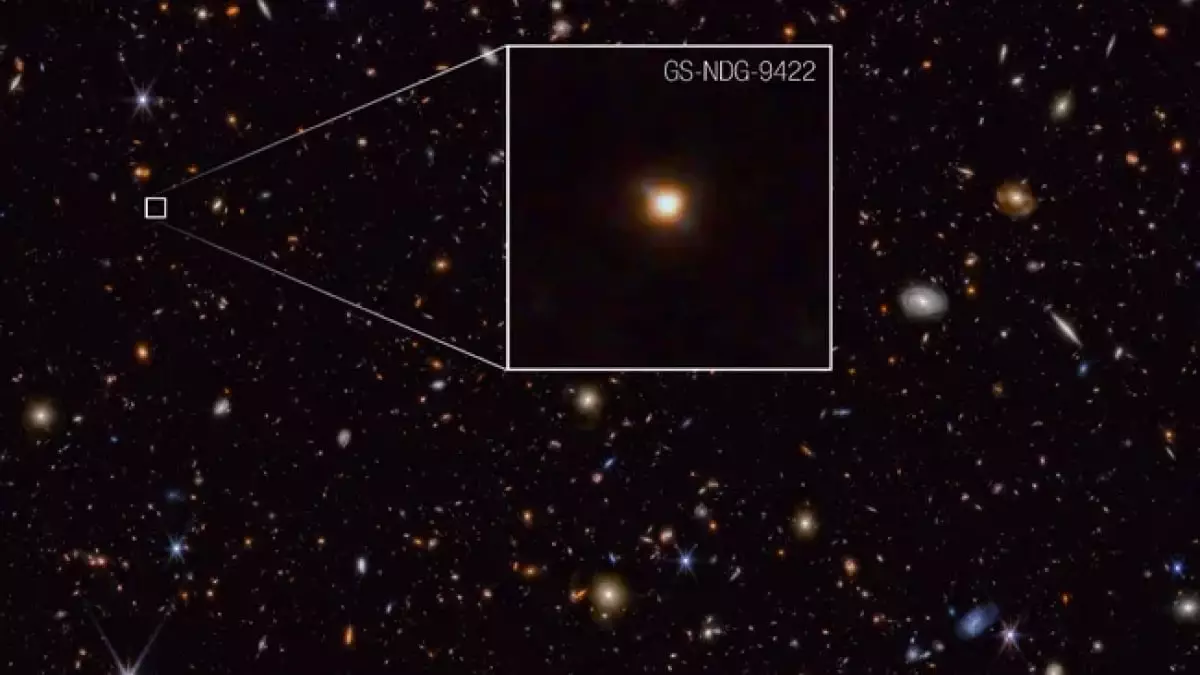The James Webb Space Telescope (JWST) has once again revolutionized our understanding of the universe, unveiling a distant galaxy that illuminates the formative years following the Big Bang. This galaxy, detected about one billion years after this cataclysmic event, provides a critical vantage point into the universe’s infancy—a time when cosmic structures were just beginning to emerge. This discovery is particularly captivating as it reveals a dust cloud located between fully formed galaxies dominated by stars and the pre-Big Bang void.
One of the most perplexing aspects of this newly identified galaxy is its luminous gas clouds, which significantly outshine the stellar bodies within it. This phenomenon challenges the conventional wisdom in astrophysics where stars are typically the predominant source of light in a galaxy. The JWST’s observations suggest that the early universe may have harbored conditions that diverge from current theoretical models. By revealing gas clouds that illuminate the galaxy’s profile more vibrantly than its stars, this discovery compels astronomers to reconsider the interactions between stars and their environmental conditions during a formative period in cosmic history.
Additionally, the galaxy is home to stars that are significantly hotter than what we encounter in contemporary galaxies. These stars, despite their extreme temperatures, have a unique composition that includes heavier elements—a stark contrast to the primordial stars formed shortly after the Big Bang, which were predominantly hydrogen and helium. This discrepancy raises intriguing questions regarding the evolution of stellar populations and suggests a more complex process of star formation and chemical enrichment during the universe’s early epochs.
The implications of this discovery extend beyond mere cataloging of distant celestial objects. It contributes to a profound understanding of how the universe transformed from its early simple stars to the intricate stellar systems we observe today. As the JWST continues its groundbreaking work, this galaxy serves as a pivotal piece in the mosaic of cosmic evolution. Each observation has the potential to unravel the mysteries of how stars and galaxies formed from the chaotic aftermath of the Big Bang.
As astronomers leverage the JWST’s unparalleled observational capabilities to delve deeper into the cosmic past, they aim to construct a cohesive narrative of the universe’s early days. This galaxy entails not just a snapshot of a moment in time, but hints at the complex interplay of environmental factors influencing stellar life cycles. The journey to understanding these interactions promises to reshape fundamental notions of cosmic evolution and our place within it. The JWST’s discoveries mark only the beginning of a comprehensive exploration of the universe, as researchers anticipate uncovering more secrets held in the depths of space and time.


Leave a Reply